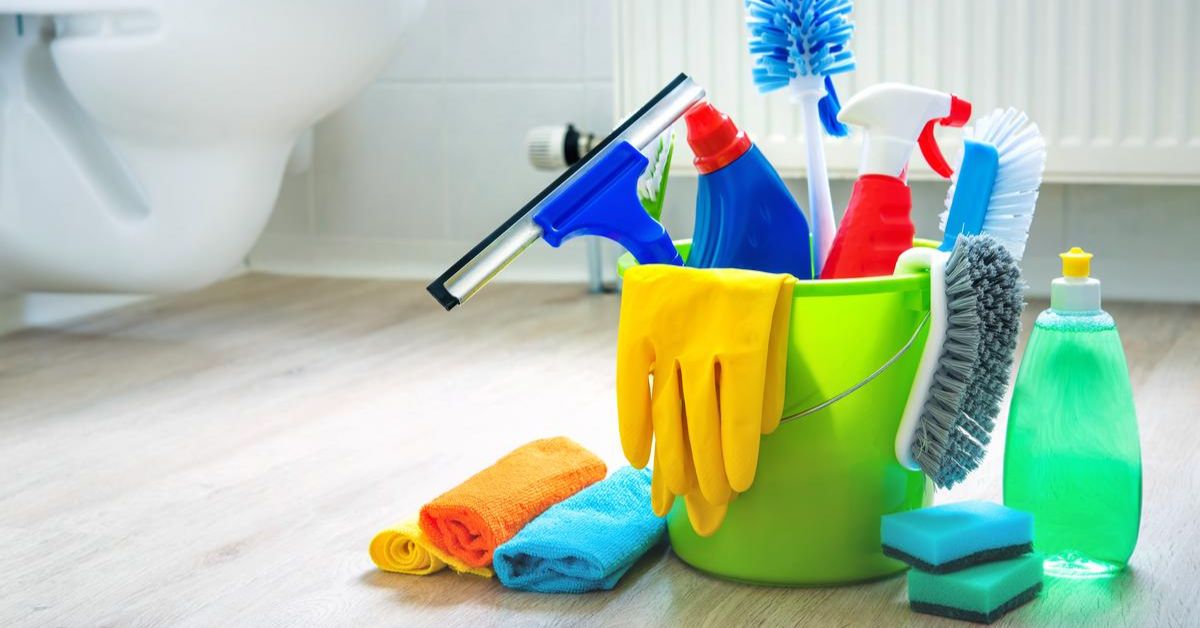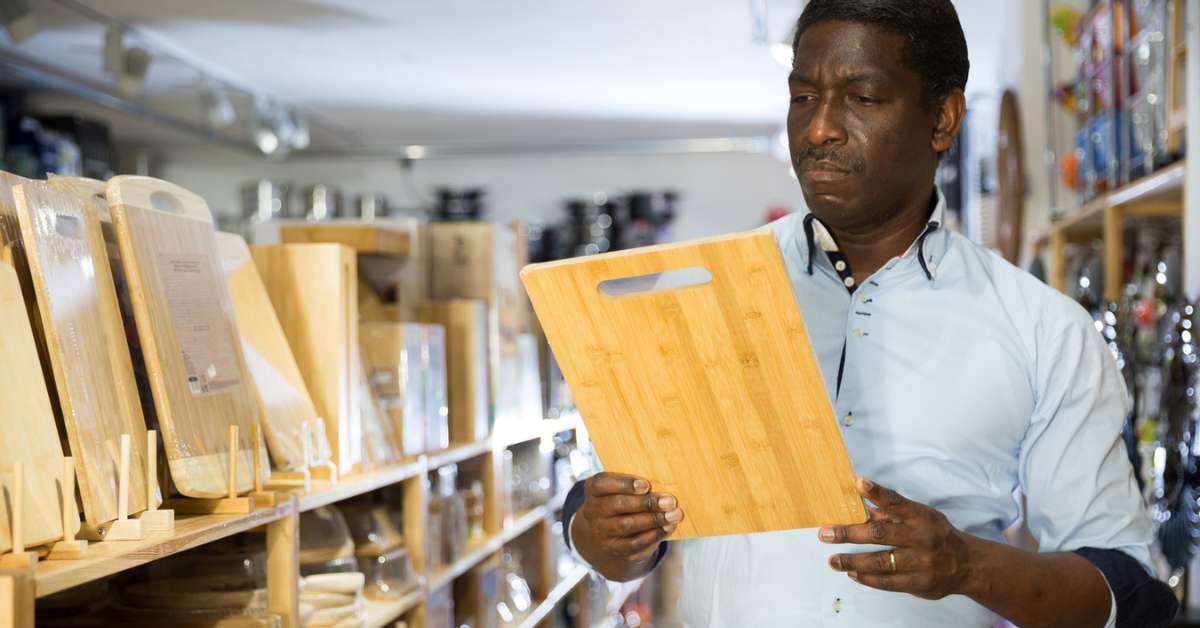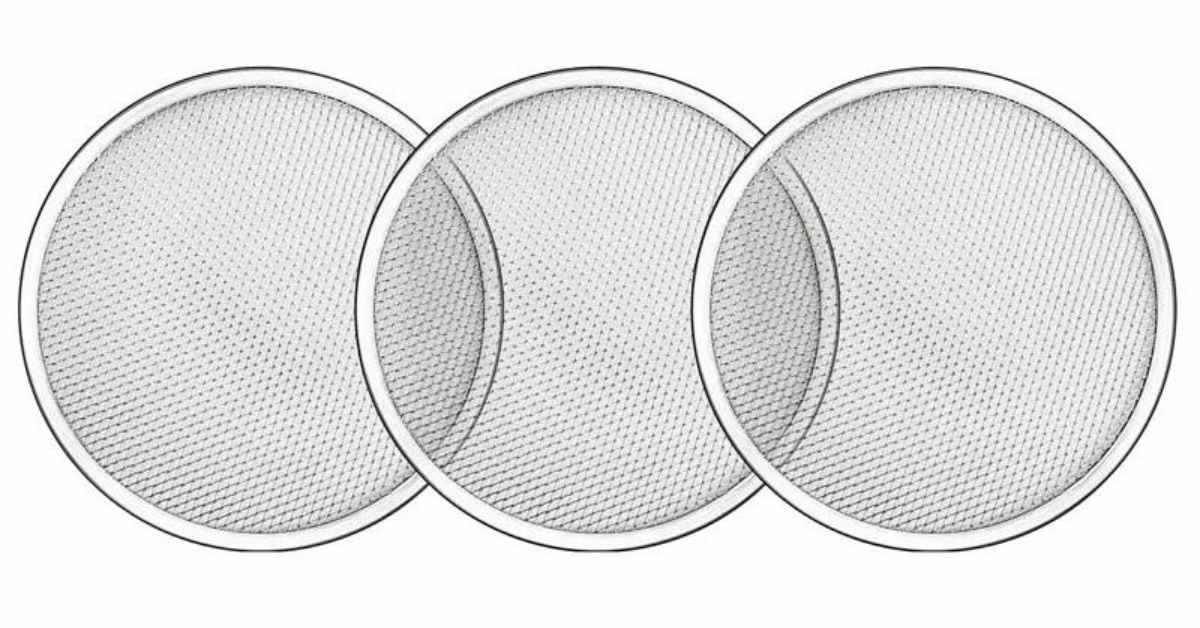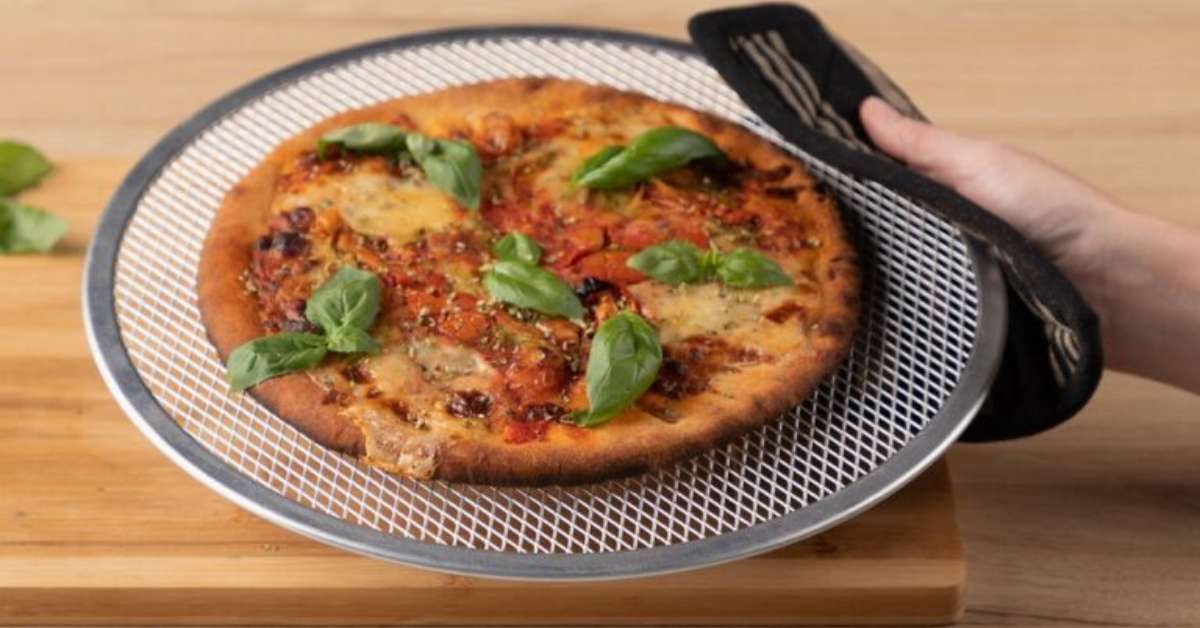We often ponder unusual questions in the Foodies Gallery, where culinary curiosity thrives. One such query surfaced: “Can you use bathroom cleaner in the kitchen?” Cross-utilizing household products may seem tempting, but it raises safety and effectiveness concerns.
In this article, we will delve into the merits and risks of using bathroom cleaners in the kitchen, providing you with the knowledge to make informed decisions in your culinary space. Let’s explore this intriguing topic together.
Table of Contents
ToggleUnderstanding Bathroom Cleaners
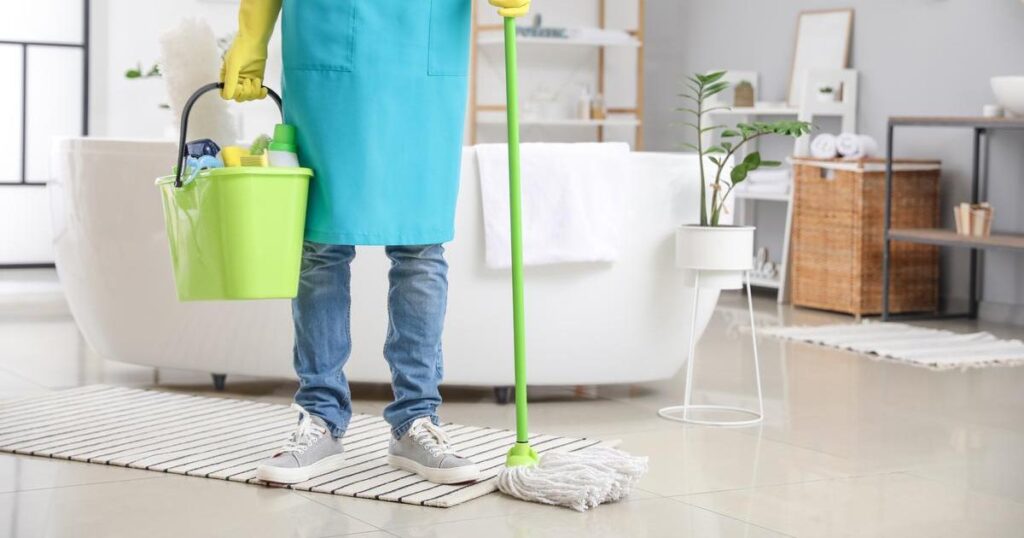
Before we delve into whether bathroom cleaners can be used in the kitchen, let’s take a moment to understand what these cleaners are made of and how they are designed to function. Bathroom cleaners are specifically formulated to tackle the challenges of cleaning bathrooms, which often involve removing soap scum, mineral deposits, and mildew.
These cleaners typically contain potent chemicals, such as bleach, ammonia, or acids, which effectively break down tough stains and disinfect surfaces. While engineered to address bathroom-specific grime, using them outside their intended environment raises essential considerations.
Kitchen Cleaners
In the heart of every culinary creation lies the kitchen, where hygiene and cleanliness are paramount. Kitchen cleaners are specially formulated to tackle the unique challenges encountered in this food preparation area. These cleaners are designed to remove grease, oil, food stains, and other kitchen-related residues, ensuring a safe and sanitary cooking environment.
Common kitchen cleaners often contain ingredients like surfactants, degreasers, and antibacterial agents, which work together to clean effectively without leaving harmful residues on surfaces. Given their tailored composition, kitchen cleaners are optimized for use in the areas where food is stored, prepared, and served.
Can You Use Bathroom Cleaner in the Kitchen
While using a bathroom cleaner in the kitchen might be tempting, it is generally not recommended due to significant differences in their formulations and intended uses.
Using potent chemicals like bleach, ammonia, or acids, bathroom cleaners are specifically designed to address bathroom-specific challenges, such as soap scum, mineral deposits, and mildew.
Conversely, kitchen cleaners are formulated to tackle grease, oil, and food-related residues, employing ingredients like surfactants, degreasers, and antibacterial agents.
The key concern with using bathroom cleaners in the kitchen is the potential for chemical residues to come into contact with food and food preparation surfaces. Bathroom cleaners may leave harmful residues that could contaminate food, posing health risks to consumers.
Furthermore, some bathroom cleaners, such as natural stone countertops, may be unsafe for use on certain kitchen surfaces, which can damage acidic or abrasive substances.
To ensure a safe and sanitary kitchen, it is best to stick to cleaners intended explicitly for kitchen use. These cleaners are formulated to effectively remove kitchen-related residues without compromising food safety.
Always read the labels and follow the manufacturer’s instructions for properly and safely using cleaning products in their designated areas.
Differences Between Bathroom and Kitchen Surfaces
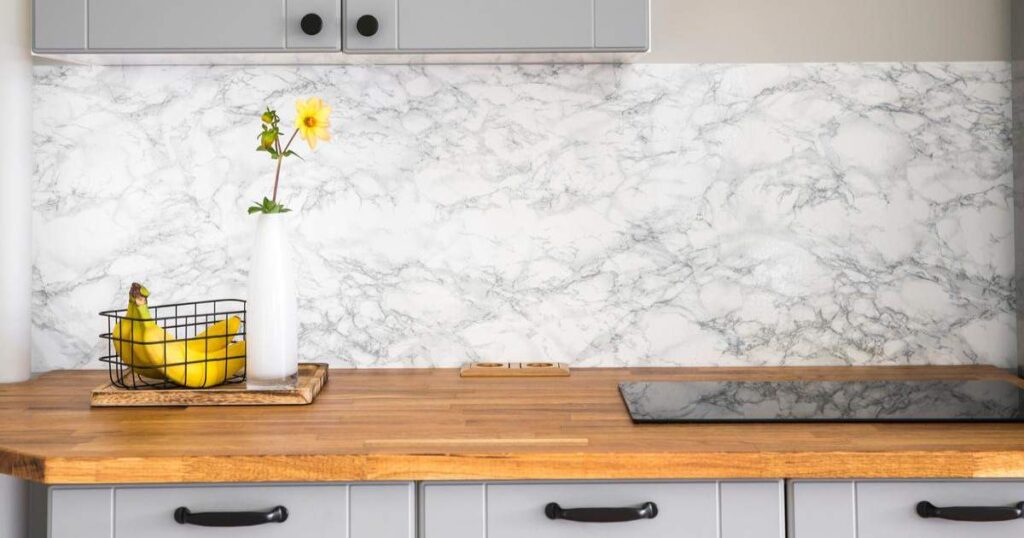
Bathrooms and kitchens are two distinct spaces in a home, each with unique surfaces and materials. Understanding the differences between these surfaces is crucial when choosing the right cleaning products for each area.
Let’s explore the variations in materials commonly found in bathrooms and kitchens and how they impact the selection of appropriate cleaning agents.
Countertops:
The bathroom countertops are often made of marble, granite, or laminate materials. These surfaces can be more sensitive to harsh chemicals, especially those containing acids or abrasives.
On the other hand, kitchen countertops are frequently crafted from quartz, granite, stainless steel, or laminate, better suited to withstand kitchen-specific cleaning agents.
Flooring:
Bathroom floors typically consist of ceramic tiles, vinyl, or stone, which require gentle cleaning to prevent damage. Meanwhile, kitchen floors often feature ceramic tiles, linoleum, or hardwood, which can handle more robust cleaning agents due to their resilience.
Fixtures and Appliances:
Bathroom fixtures, such as faucets and showerheads, are often made of metal, while kitchen fixtures are typically constructed from stainless steel or chrome. Appliances in both areas might include stainless steel surfaces, necessitating appropriate cleaners to maintain shine.
Grout Lines:
Both bathrooms and kitchens have grout lines between tiles, which can be vulnerable to staining and mold growth. Care should be taken when choosing effective yet gentle cleaners on grout to maintain its appearance and longevity.
Understanding these surface differences will help you select the most suitable cleaning agents for each space. Using bathroom cleaners in the kitchen and vice versa may yield different results and can damage surfaces.
By opting for the right cleaners designed for each area’s specific materials and challenges, you can maintain a clean, safe, and aesthetically pleasing environment in your bathroom and kitchen.
Risks of Using Bathroom Cleaners in the Kitchen
Employing bathroom cleaners in the kitchen poses several significant risks that should be considered. One of the primary concerns is the potential for chemical residues to come into contact with food and food preparation surfaces.
Bathroom cleaners often contain harsh chemicals, such as bleach, ammonia, or acids, which can leave harmful residues on kitchen countertops, sinks, or other surfaces. These residues may contaminate the food and pose health risks to individuals consuming the meals prepared in such an environment.
Furthermore, using bathroom cleaners on certain kitchen surfaces can lead to irreversible damage. Natural stone countertops, for example, are susceptible to etching and discoloration when exposed to acidic substances found in some bathroom cleaners. Similarly, abrasive cleaners can scratch and dull surfaces, compromising the aesthetics and hygiene of the kitchen.
Moreover, the strong odors associated with bathroom cleaners might linger in the kitchen, affecting the overall ambiance and potentially imparting unwanted flavors to food. This can be particularly concerning, especially in kitchens with poor ventilation or open layouts where the smell can permeate the entire living space.
To safeguard both your health and the condition of your kitchen, it is best to stick to using cleaning products specifically designed for kitchen surfaces. These products are formulated to remove kitchen-related residues effectively without compromising food safety or damaging the surfaces.
Always read the labels and follow the manufacturer’s instructions to ensure proper and safe use of cleaning products in their designated areas.
Alternatives to Bathroom Cleaners in the Kitchen

Fortunately, several safe and effective alternatives to bathroom cleaners exist for maintaining a clean kitchen environment. These alternatives can help you tackle kitchen-specific challenges without compromising food safety or damaging surfaces. Here are some excellent options to consider:
Vinegar Solution:
A simple and natural white vinegar and water solution can work wonders in the kitchen. Vinegar’s mild acidity effectively cuts through grease, stains, and some bacteria.
Mix equal parts of water and white vinegar in a spray bottle, and use it to clean countertops, sinks, and appliances. It is gentle enough for most surfaces, including natural stone, and leaves no harmful residues behind.
Baking Soda Paste:
Baking soda is an excellent non-abrasive cleaner and deodorizer. Create a paste by mixing baking soda with a small amount of water, and use it to scrub away tough stains on sinks, countertops, and stovetops. This method is beneficial for removing grime without scratching the surfaces.
Citrus-based Cleaners:
Commercial citrus-based cleaners are formulated with natural citrus extracts and effectively cut through grease and grime. These cleaners leave a pleasant scent and are safe to use on most kitchen surfaces.
Microfiber Cloths:
Consider using microfiber cloths for daily cleaning tasks. These soft and absorbent cloths can clean surfaces effectively with just water, reducing the need for chemical cleaners. They are also reusable and eco-friendly.
Hydrogen Peroxide Solution:
Hydrogen peroxide is a gentle yet powerful cleaner and disinfectant. Dilute hydrogen peroxide with water to clean and disinfect kitchen surfaces, including cutting boards and food preparation areas.
Always perform a spot test before using any new cleaner on surfaces to ensure compatibility and avoid any potential damage. When handling or mixing cleaning solutions, follow the manufacturer’s instructions and take appropriate safety precautions.
Proper Cleaning Techniques for the Kitchen
Maintaining a clean and hygienic kitchen is essential for food safety and a pleasant cooking experience. To ensure effective cleaning without causing damage to surfaces, it’s crucial to follow proper techniques. Here are some guidelines to help you achieve a pristine kitchen environment:
Clearing Clutter: Before cleaning, remove all items from countertops and surfaces. This lets you clean thoroughly and prevents cross-contamination between cleaning products and food.
Sweep and Wipe: Begin by sweeping the floors to remove loose debris. Wipe down countertops, appliances, and cabinet exteriors with a damp cloth to eliminate surface dust and crumbs.
Degrease Appliances: Kitchen appliances, especially the stovetop, and oven, often accumulate stubborn grease. Use a kitchen-specific degreaser or a mixture of warm soapy water to tackle greasy surfaces effectively.
Don’t Forget the Sink: The kitchen sink can harbor bacteria and food residues. Clean it regularly with hot soapy water, and consider using a disinfectant to eliminate germs.
Focus on High-Touch Areas: Pay special attention to high-touch areas like refrigerator handles, microwave buttons, and light switches. Wipe these areas frequently with a disinfectant to prevent the spread of germs.
Cleaning Cutting Boards: After each use, wash cutting boards with hot soapy water and sanitize them with a mixture of water and white vinegar or hydrogen peroxide.
Properly Clean the Floor: Sweep the kitchen floor regularly to remove crumbs and dirt. Mop the floor using a suitable floor cleaner. Rinse the mop frequently to prevent dirt from spreading.
Empty and Clean Trash Bins: Empty and clean trash bins regularly to avoid unpleasant odors and prevent bacteria buildup.
Sanitize Sponges and Cloths: Regularly disinfect kitchen sponges and cloths by microwaving damp sponges or washing clothes in hot water.
Ventilate the Kitchen: Proper ventilation is crucial during and after cleaning. Open windows or turn on exhaust fans to remove cleaning fumes and moisture, promoting a fresher and healthier environment.
Following these proper cleaning techniques, maintain a pristine kitchen and ensure a safe and inviting space for culinary creativity and enjoyment.
Conclusion
In pursuing a clean and inviting culinary space, making informed choices regarding cleaning products and techniques is crucial. While bathroom cleaners may be effective in their intended environment, using them in the kitchen poses risks to food safety and kitchen surfaces’ longevity.
Instead, opt for kitchen-specific cleaning agents or natural alternatives like vinegar, baking soda, and citrus-based cleaners. Proper cleaning techniques, including regular sanitization of high-touch areas, floors, and appliances, will help maintain a hygienic and pleasant kitchen environment.
By prioritizing safety, hygiene, and proper maintenance, you can ensure your kitchen remains a vibrant hub for culinary delights, inspiring creativity and gastronomic joy.
FAQs
Can I use bleach in the kitchen?
Using bleach in the kitchen requires caution. While bleach can effectively disinfect and remove stains, it must be used carefully, especially on food preparation surfaces. It is best to dilute bleach according to the manufacturer’s instructions and avoid direct contact with food. Consider using kitchen-specific disinfectants for routine cleaning.
How often should I clean my kitchen?
The frequency of kitchen cleaning depends on usage and personal preferences. However, some general guidelines include daily wiping countertops and spills, weekly deep cleaning of appliances and floors, and regular sanitization of high-touch areas. Adapting a normal cleaning routine helps maintain a clean and healthy kitchen environment.
Is there a difference between kitchen and bathroom cleaners?
Yes, there is a significant difference between kitchen and bathroom cleaners. Bathroom cleaners are designed to address bathroom-specific challenges like soap scum and mildew, while kitchen cleaners are formulated to tackle grease and food residues. Using the right cleaner for each area ensures effective cleaning without damaging surfaces or compromising food safety.
Where can I use the bathroom cleaner?
Bathroom cleaners are intended for use only in bathrooms, designed to tackle specific challenges like soap scum, mineral deposits, and mildew. Avoid using bathroom cleaners in the kitchen, as their harsh chemicals and residues can pose health risks and damage kitchen surfaces.
Can I use a foaming bathroom cleaner in the kitchen?
Using a foaming bathroom cleaner in the kitchen is not recommended. Foaming bathroom cleaners are designed for bathroom surfaces and may contain harsh chemicals unsuitable for kitchen use. Stick to kitchen-specific cleaners or natural alternatives when cleaning your culinary space to ensure optimal safety and efficacy.

